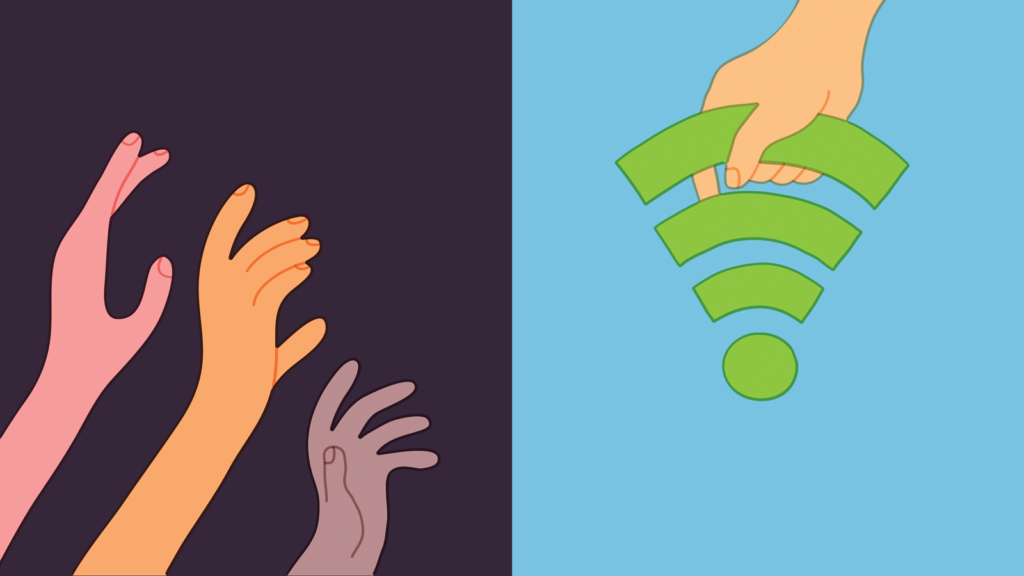This is part two in a two part series co-authored by David Edmonson, Executive Director of Austin Tech Alliance, and Robert Friedman, Executive Director of Permanent Legacy Foundation and formerly with Mozilla. Find part one here.
Last week, we introduced you to the concept of digital inclusion and the fact that tens of thousands of Austin residents are completely disconnected from the internet. Because technology is evolving daily, Austin recognized the need for strategic direction to keep up with the changing needs of the city’s residents.
For example, City Council developed a Digital Inclusion Strategic Plan, which served to capture community priorities for digital equity. The City of Austin’s Digital Inclusion Office has also maintained a baseline understanding of the status of local residents’ digital literacy and Internet adoption through a citywide survey conducted once every three years. Taking factors such as ethnicity, geography, and income into account has helped the city identify gaps and fill them with necessary skills, access, and training.
Based on survey insights, along with feedback from the education, public health, business, and nonprofit sector, the Strategic Plan maps out access and adoption strategies as well as specific initiatives that need to be undertaken.
Through the Digital Inclusion Office, the city is taking action in response to the findings from the citywide survey by developing programs like a computer refurbishment program, currently in its pilot phase, which will aim to connect computers and devices with nonprofits that will use them for digital inclusion purposes.
Other initiatives include:
- The Digital Empowerment Community of Austin (DECA), a network of dozens of nonprofits, educational institutions, and other stakeholders, working to improve the community’s ability to participate in digital society. They keep up with nonprofits that work on digital equity, remain up to date with their needs, and organize community efforts.
- Recognizing that lower-income households have had less access to internet connectivity, one of the city’s hallmark projects, Unlocking the Connection, has sought to redress economic disparities within the broadband gap. It has distributed free, basic internet access to around 1,800 residential public housing units through its partnership with Google Fiber.
- Backed by the city’s Grant for Technology Opportunities Program (GTOPs), the Digital Inclusion Office funds training programs for a range of local organizations, keeping a particular eye on fostering digital inclusion in underserved communities.
But are we doing enough? For the 2018 GTOPs grant cycle, with no marketing budget, the program received a total of $611,081 in worthy grant proposals with only $200,000 available to divvy up. A 200 percent program funding deficit of $411,081 serves as a compelling indicator that we’re not.
Getting Involved
For the expert technologist or passionate problem-solver, there are several opportunities in Austin to help with digital literacy engagement.
Lunch & Learn
Beginning in 2018, Austin Tech Alliance is offering member companies a speaker series of lunch-and-learns about the digital divide. The goal is to help tech employees learn about the nature of the digital divide in Austin, hear directly from service providers working in that space, and understand how they can use their unique skill set to get involved.
Half the battle with bringing digital inclusion efforts to life involves connecting with others and building relationships within the community. Whether it be in the physical or digital space, garnering an increasingly connected community brings more opportunities for local residents.
Become a Volunteer
Community organizations that provide digital literacy training rely on volunteer trainers. Volunteers include Austinites pursuing technology-related degrees or certifications, retirees looking to give back, and tech employees excited to bring their skills to bear for the larger community. Bottom line, they need a desire and ability to help others learn how to use technology and the internet.
For instance, you can volunteer at public access computer labs or help with hardware refurbishment. If you love programming, you can mentor young people who want to learn how to code.
Whether you are a student or a working adult who is interested in digital literacy, you have the potential to advance digital equity through volunteerism. Digital inclusion only grows faster when members of our community step up to help.
Build and Collaborate
Oftentimes, individuals have awesome ideas for a potential app, but they lack the technological know-how to develop it — or they might need help putting up a website or launching a social media fundraising campaign.
There are organizations in town looking to help. Open Austin is a group of volunteer programmers and hackers that use design, technology, and open data to improve the quality of local residents’ lives. Likewise, ATX Hack For Change, a three-day civic hackathon, carves out space for active civic engagement and positive change by empowering the community to seek solutions for challenges facing Austin.
Wrapping up
Austin has the knowledge, creativity, and resources to address our digital divide.
This issue matters. As the city’s Digital Inclusion Strategic Plan states, “[i]t is critical that every one of our residents has access to digital and communications technology and understands technology and its relevance to their daily lives, whether for helping with their kids’ homework, or looking for jobs, getting access to health information, or accessing online government information.”
It’s up the broader community, including Austin’s tech sector, to acknowledge this challenge and step up to make real change.

